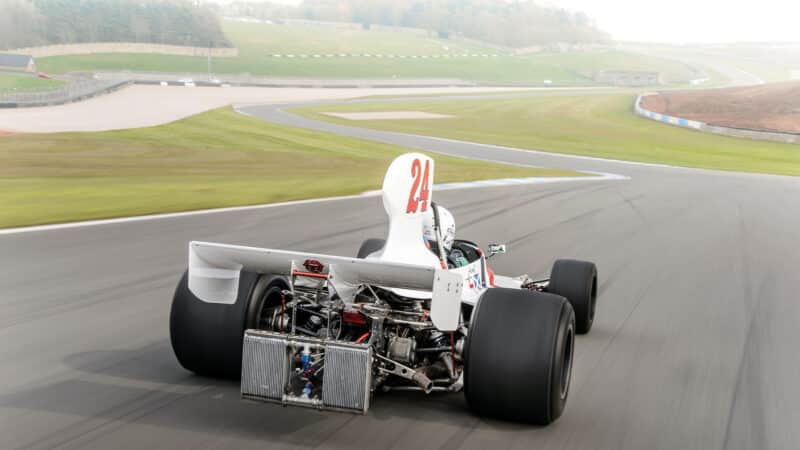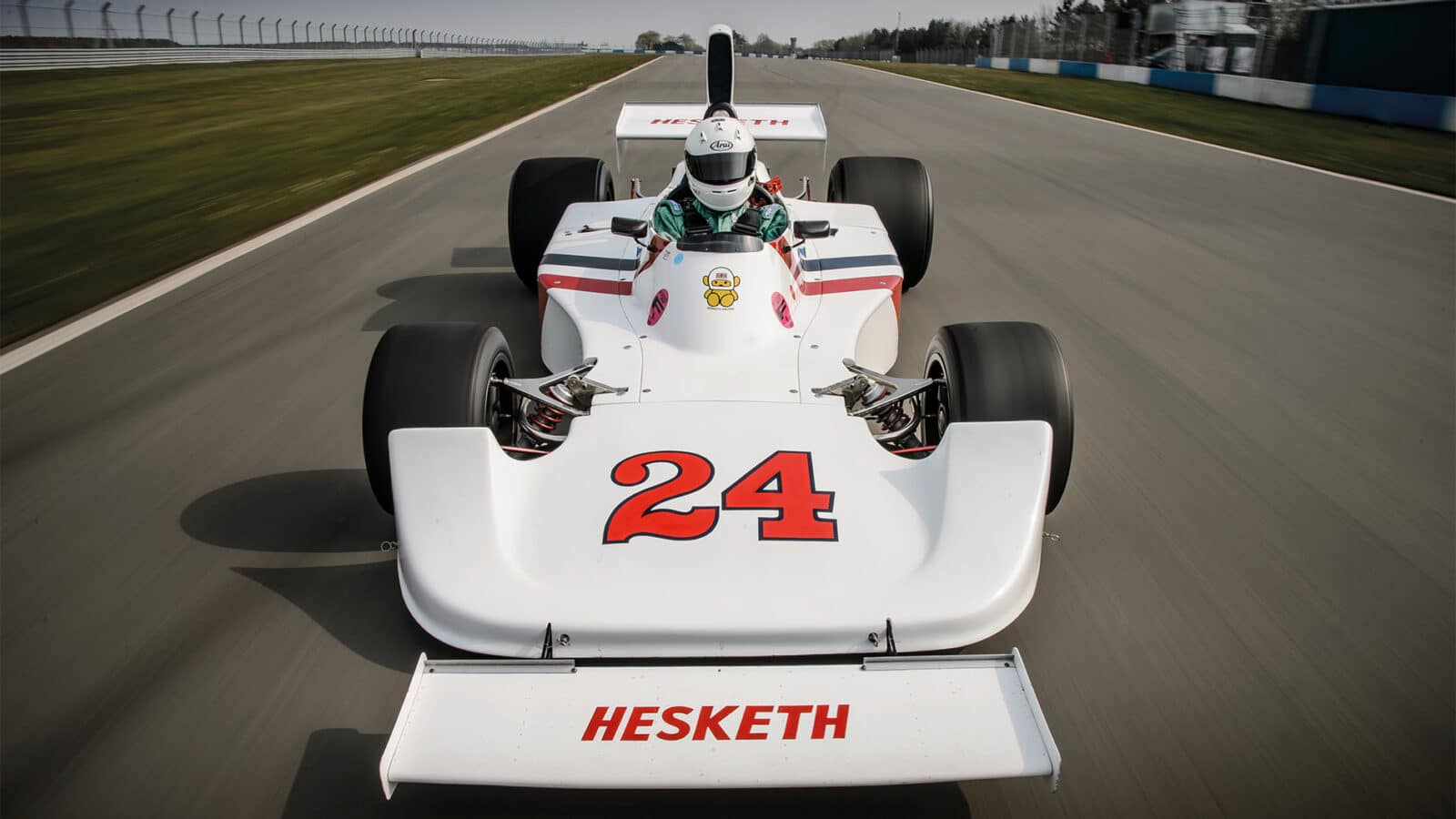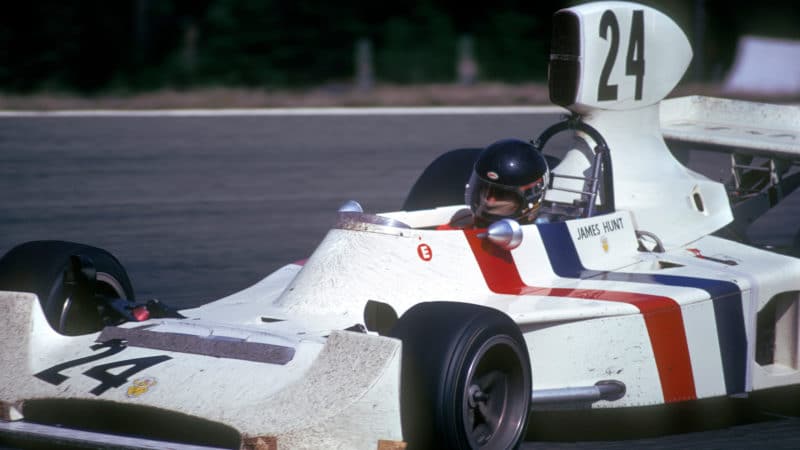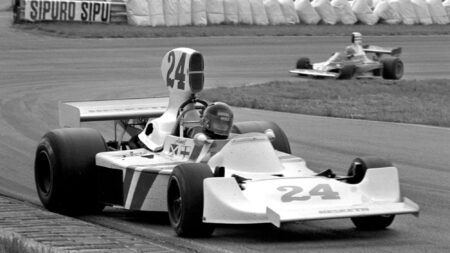At least Hunt could clearly see his quarry but Ronnie saw what must have been a totally unexpected move coming, gave just enough space and kept them both on the track. In that moment, Hunt trusted Peterson with his life.
Sadly for Lord Hesketh, he didn’t see the move at all from his vantage point. “There were no monitors in those days, so all I saw was a great white wall of paper as all the programmes in the crowd went up.” Bubbles just remembers “James appearing in front of us and the Lotus.” And that was that. Ronnie retired two laps later and James ran away to victory, crossing the line 47sec ahead of Mass. And only then, when Hunt was seen nursing a rather bruised right hand was it revealed that, on lap two, the top of the gearlever had come off in his hand and he’d been smashing the remaining alloy stump to and fro ever since.
“It was a great moment to savour,” recalls Bubbles, “and we could all go to the pub afterwards.” These words are fascinating to me, because they reveal so much about how important winning at home was to the team, and also the nonchalant way they chose at least to appear to be going about it.
The Hesketh 308 itself is looking almost nonchalant in the Donington pitlane today. It has come over from the US and, like the Lister to be found elsewhere on these pages, is to be sold at RM’s Monaco auction on May 10. His Lordship, known in the day to Hesketh employees as Le Patron, will be in attendance. The car is estimated to be worth between €400,000-€700,000 but with its history and the post-Rush Hunt hullabaloo, anything is possible.

Powering down the hill at Donington
It is, of course, the first Hesketh F1 car and has had what is described as ‘a recent, complete and correct’ restoration. As mentioned, it failed to finish at Brands and in South Africa, won in Silverstone and sat out most of the rest of the season as the T-car. The chassis was sold in 1975 to Harry Stiller Racing and was used by both Alan Jones and Harald Ertl, though neither scored any points.
As we shall see, there is nothing revolutionary about its design. In the past some have sought to explain how a happy gathering of enthusiasts managed to meet and on occasion beat the world’s biggest and best F1 teams, but there seems to be no single magic wand waved by Hesketh. The secret, if such a thing there be, is that Hesketh Racing was a sight more committed to F1 than it led others to believe. Bubbles, who seems as relaxed and easy going today as he was reputed to be then, actually ran a very tight ship among whose talented crew were Dave ‘Beaky’ Sims (previously Jim Clark’s mechanic at Lotus) and Nigel Stroud (who’d go on to design the Le Mans-winning Mazda 787B).









